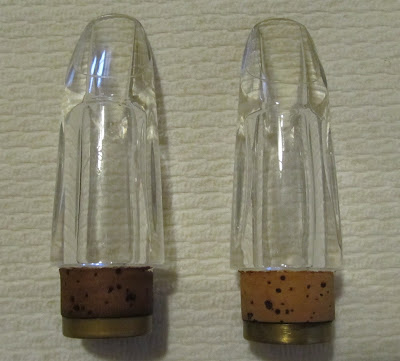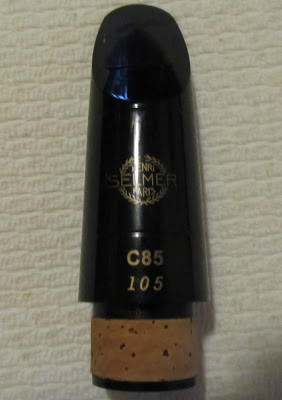Once upon a time, jazz clarinetists were so big they starred in Hollywood movies. Or at least Artie Shaw took a prominent place in a couple of films: 1939's
The Dancing Co-Ed, and
Second Chorus, a 1941 film featuring the dancing team of Fred Astaire and Paulette Goddard.
The later film is better known to Shaw fans. Fred Astaire's enduring popularity kept it in public view for decades on television, and when the time came, it was released in VHS and DVD format promptly. Featuring a good amount of music, including clips of Shaw's "
Concerto for Clarinet", his original tune "Love of My Life" and several other numbers, well spaced throughout the movie, it's an ideal place to find footage of Shaw's physical approach to the clarinet.
By contrast, there isn't as much Shaw in
The Dancing Co-Ed. Conceived as vehicle for MGM's newest girl star, Lana Turner (who a year later became Mrs. Artie Shaw), the plot is a gentle romantic comedy in the 1930s screw-ball tradition, interspersed with mild dance numbers.
For fans for Artie Shaw, the highlight will be another take of "
Traffic Jam" performed by the famous "Stardust Band" of 1938-39. The rest of the movie will seem more like a tease, throwing out snippets of Nightmare, Non-Stop Flight, I'm Coming Virginia, Double Mellow, Jungle Drums, Back Bay Shuffle, and others. Like Benny Goodman's role in
Hollywood Hotel, we jazz aficionados have to wait a long time before our hero takes the limelight, and when he does, it isn't for long.
Besides "Traffic Jam", the musical highlight for me is an over-the-top-Hollywood moment where the Shaw Band joins a parade, with Artie playing an obbligato solo over "Stars and Stripes Forever." While others might find this a moment of eye-rolling endurance, for me the opportunity to hear Shaw take a casual chorus over Sousa is worth the price of the DVD by itself.
I've watched this movie a few times over the last several weeks. I bought it for Shaw's playing, expecting little more than fluff from the rest of the movie. But I was pleasantly surprised at the quality of the rest of the film. Most of these sorts of films feel like extended music videos held together by rushed bits and pieces of plot. Some of the very best performances from swing era musicals (think Harry James's
Private Buckaroo or the aforementioned
Hollywood Hotel) can sometimes leave a lot to be desired beyond the band numbers.
But in this movie, Lana Turner is great, and so are the rest of the cast. She plays the role of Patty Marlow, a young professional hoofer without a name for herself, who has been planted at a large Mid-Western University for the purpose of winning a major studio's dance competition--all to ratchet up publicity for the coming movie. Trouble ensues when school-newspaper reporter Michael "Pug" Braddock, played by a bright-faced and earnest Richard Carlson, suspects the competition to be rigged. The two main characters fall inevitably in love, and the movie becomes a comedic parable of young love, lies, truth telling, and consequences.
Turner's charisma and charm carry the movie for 84 minutes, and while the clarinetists in the audience might be left wishing for more Shaw, the balance between comedy, plot, and music seems close to being right. For those of us weary of the increasingly cynical, dreary, and immoral nature of our current Hollywood romances, this movie is like a breath of fresh air. There is something charming hearing a dress which would be tame by current network TV standards referred to as a "homewrecker", for instance. There is nothing stodgy about this movie: its moral framework enables the young lovers to be effervescent instead of cynical, free instead of lost. Because of this, it's worth preserving for even non-musical reasons. Yet also because of this, for the jazz musician these films are more than an exercise in nostalgia--they are an aesthetic training ground, providing cultural context for the tunes we call "standards."
In terms of practical music making, I consider it very important to watch these old films. In my opinion,
seeing a great player can be as important as
hearing them--watching Artie Shaw and Harry James has probably had as big an impact on my playing (especially my breathing) as the transcribing I've done.
I give this movie a rating of
Four Good Reeds on the strength of the script and overall acting, which is charming and withstands repeated viewings quite well. A fifth good reed would have been added, if only Shaw and his band could have played more. Any way you cut it, though, this one is a keeper and a classic.
[ As a footnote, yesterday I was subjected to nearly three hours of orc-slaying inanity under the name of "The Hobbit". In the aftermath of that bizarre experience, I couldn't help reflecting on what the whole film would have been like had Lana Turner showed up at Bilbo's door, dressed as Patty Marlow. My bet is that Gandalf and thirteen dwarves would have blushed, stumbled for words, and left quietly, with Thorin Oakenshield perhaps mugging the camera on his way out to whisper "What's in your wallet?" sheepishly. Then Lana could sit in the parlour, turn on the "wireless" and introduce a deeply embarrassed Bilbo to the music of Artie Shaw. Is it too late to make this revision? Someone please call Peter Jackson.]





.jpg)

